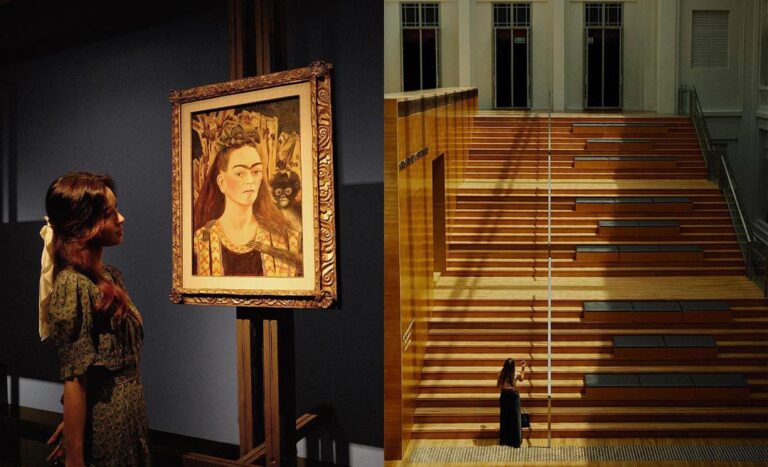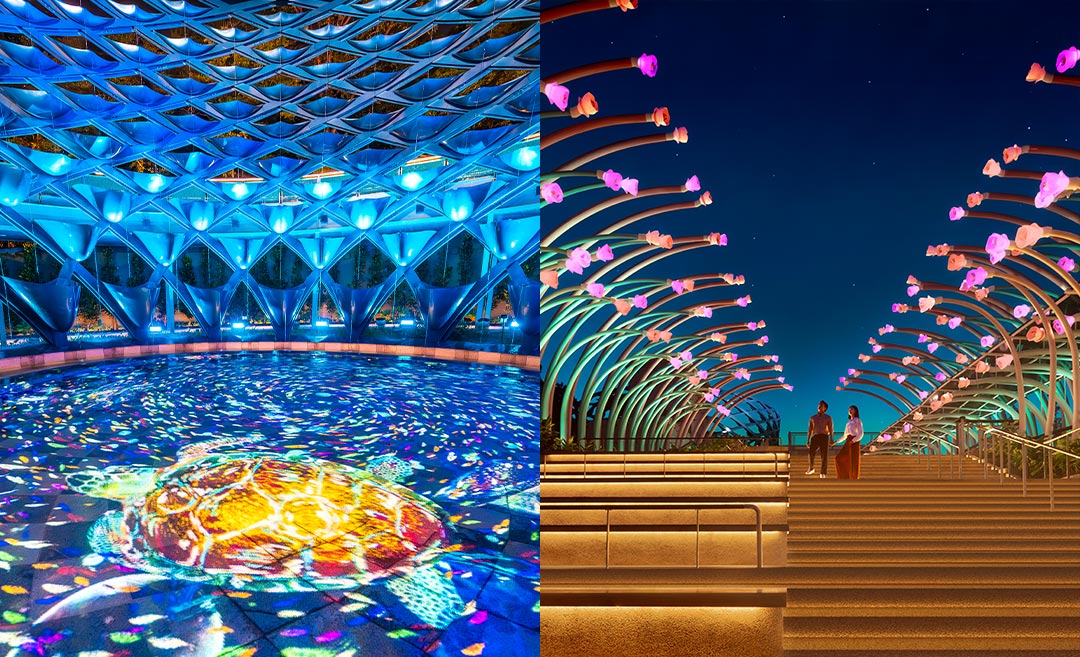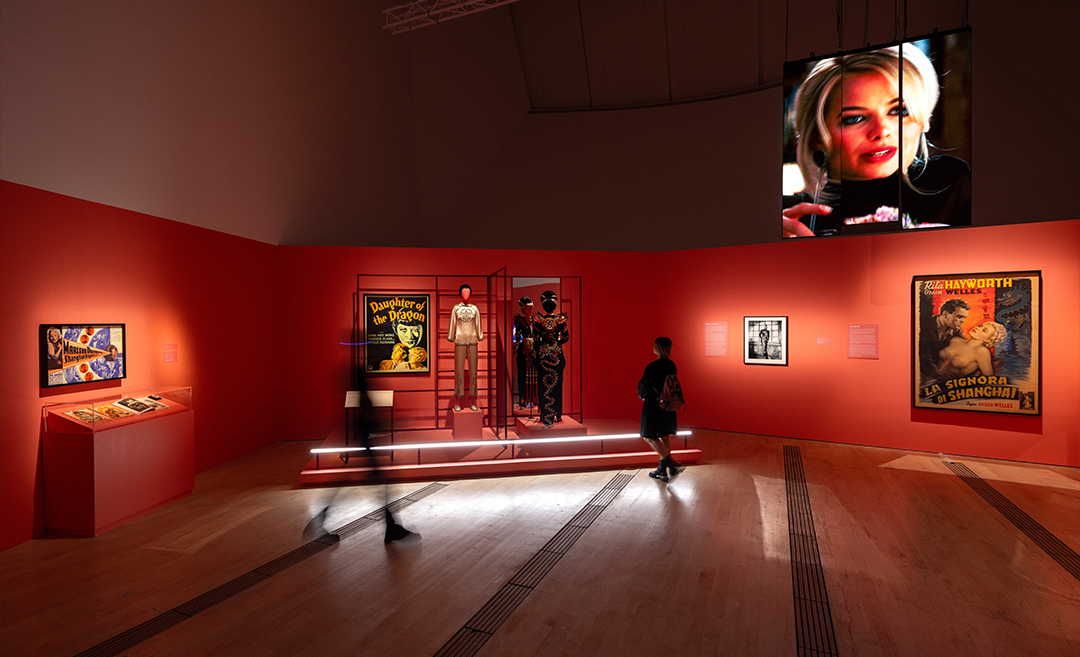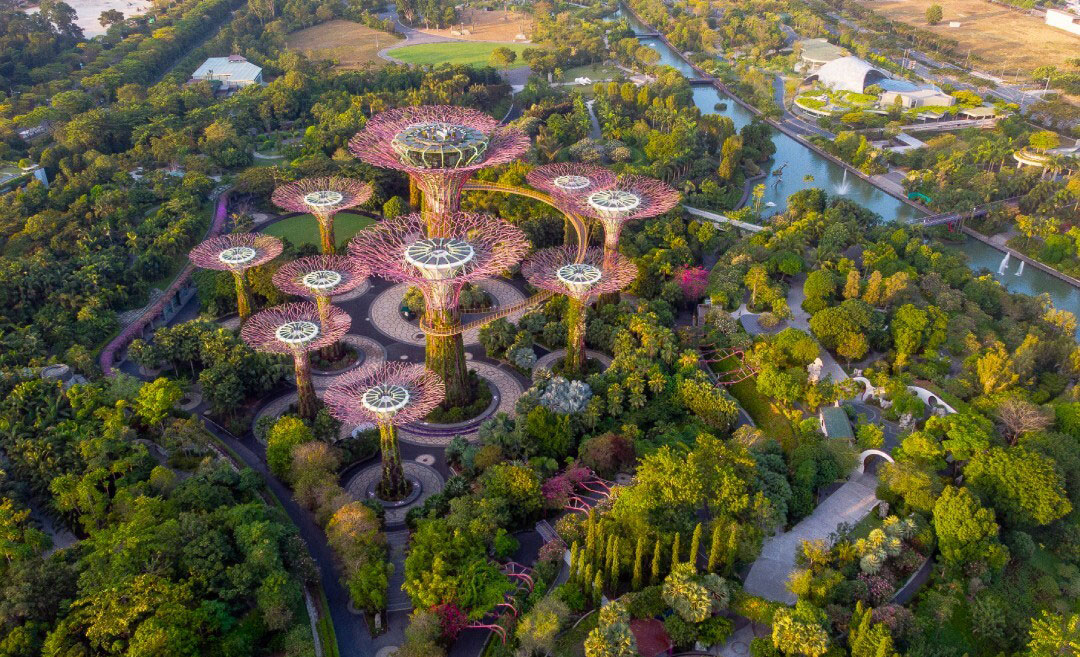A local landmark and regional visual arts hub, the stunning National Gallery Singapore is home to the world’s largest public collection of modern art from Southeast Asia.
Located in the heart of the Civic District, among the Lion City’s top attractions, the 64,000-square-metre venue opened its doors to the public in 2015.
The redesigned space – a celebration of Singapore’s art and heritage – features galleries, an art education centre, a library and archive, a rooftop garden and several restaurants and bars.
Here are some things you probably didn’t know about National Gallery Singapore:
1. It occupies two national monuments
National Gallery Singapore occupies not one but two buildings – the country’s former Supreme Court and City Hall.
To conserve their historic architecture, these two heritage buildings were given a contemporary upgrade with minimal architectural intervention.
The add-ons include a sweeping steel and glass roof structure held up by tree-like supports linking both buildings and a spectacular rooftop terrace overlooking the Padang.
2. It has the largest Southeast Asian modern art collection
The gallery’s pride is its vast showcase of more than 8,000 Southeast Asian artworks, including paintings, sculptures, and installations from the 19th century to the present.
Highlights include permanent exhibitions like Between Declarations and Dreams, a display of over 300 masterpieces that navigates Southeast Asian history through art, and Siapa Nama Kamu?, an artistic examination of Singaporean identity.
Look out for Drying Salted Fish, a Chinese ink and watercolour composition by local artist Cheong Soo Pieng, a pioneer of the Nanyang art style.
3. It is where Japanese forces surrendered in WWII
With its towering marble columns topped by brass capitals, the City Hall Chamber is perhaps the gallery’s grandest space.
The chamber has borne witness to many historic events, the most significant of which was the signing of the instrument of surrender that marked the end of Japan’s World War II occupation of Southeast Asia.
It was here that on 12 September 1945, a Japanese delegation led by five generals and two admirals formally surrendered to Admiral Lord Louis Mountbatten, the British Supreme Allied Commander in Southeast Asia.
Singapore’s founding prime minister, Lee Kuan Yew, was also sworn into office in this chamber on 5 June 1959.
4. It is home to hidden treasures
Few people know that a time capsule is concealed under the stone floors of the former Supreme Court building.
The capsule, containing newspapers from 31 March 1937 and Straits Settlements coins, was buried beneath the building’s foundation stone by the Governor of the Straits Settlements, Thomas Shenton Whitelegge Thomas, on 1 April 1937.
These treasures from Singapore’s colonial past are only due to be unearthed in the year 3000.
5. It once housed notorious criminals
Fancy going behind bars? The barred enclosures in the Supreme Court wing aren’t contemporary installations but were once holding cells for offenders awaiting trial.
Some of Singapore’s most infamous criminals, including Adrian Lim, a self-professed healer who was responsible for the gruesome murder of two children in the 1980s, awaited arraignment in these cells.
Two of the courthouse’s 12 cells were preserved during renovations and are open to the public.
For a glimpse into previously restricted zones that include a network of hidden passageways, visitors can join the gallery’s Back-of-House Tour.
6. It features two distinctive domes
One of the National Gallery’s most prominent architectural features is the exterior dome of the Supreme Court wing.
The copper dome, which has weathered over time and now sports a greenish patina, is not the gallery’s only cupola.
Previously hidden, the smaller, windowed Rotunda dome that soars over the old circular law library can now be admired up close from the Supreme Court Terrace.
This story by Chitra Santhinathan was originally published on AirAsia. Zafigo republished this story in full with permission from the publisher, simply because good stories should be read by as many people as possible! If you have stories that will be of interest and useful to women travellers, especially in Asia, please get in touch with us at [email protected].




